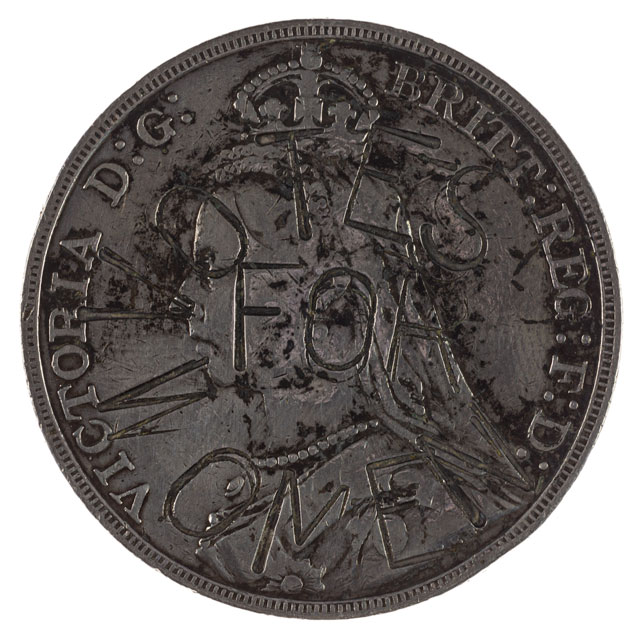This laboratory explores gender as an integral part of the construction of currency by examining transformation, representation, and suppression. The objects are a ten-pound Brixton note, featuring David Bowie, a Victorian coin that has been modified to advocate for women’s suffrage, and a French West-African bank note depicting an African family. Together, these objects demonstrate various forms of gender on official currency and serve to provide marginalized groups power beyond their typical scope. The Bowie Buck puts an important queer figure on a currency from a government that attempted to silence the community. It both challenges normative gender presentations on money and brings representation to the community of Brixton and to queer people. By challenging the notions of who can produce and appear on currency, it undermines our expectations of queer people within society at large. The Victorian coin brings attention to a group that has been forced out of politics and the public sphere. The counter marks were made on a coin with a Queen, who was supposed to represent the political power of the UK, even though women did not have the right to participate in politics. As for the French West African Franc, unknown African women were placed where people in power had typically been. Rather than a royal figure of power representing currency, women and families represented currency, one of the most legitimate assertions of colonial power.

This is a Brixton Pound, a type of currency invented in 2008 to jumpstart the economy of Brixton that is accepted by thousands of businesses. The David Bowie pound was produced in 2011, and features Bowie from the album cover Aladdin Sane in his iconic lightning-bolt makeup.
The reverse side of this banknote shows the number 10 on the left, with the zero replaced by a peace sign. On the right, there’s a hand releasing a dove, which slowly becomes the peace sign in the 10. This is from the graffiti piece Nuclear Dawn, on Coldharbor Lane. The design is credited to Charlie Waterhouse and Clive Paul.


This object is a Victorian coin with suffragette countermarks, minted in 1892 and countermarked in 1905. The obverse depicts Queen Victoria I with “votes for women” inscribed on the front.
The reverse is an image of a mythological figure on a horse, with a Women’s Social Political Union inscription. This coin was countermarked during the British suffragette movement as a mass protest against oppressive power.

The other side depicts an African family consisting of a woman, a man, and a child. In contrast with other forms of currency, this banknote depicts mundane, everyday citizens partaking in physical, domestic labor. In opposition with other women on currency, these women have no power and portray typical gender roles for women at the time. This note depicts clear French representations of African women, as beings used for labor and domesticity.


The One Hundred Franc note is a banknote created in 1952 by the French. This currency was created during the period of peak African imperialism. Creation of the note asserted the dominance of the French in Africa. On one side of the bank note is an African woman holding a bowl of fruit.

Comments are closed, but trackbacks and pingbacks are open.